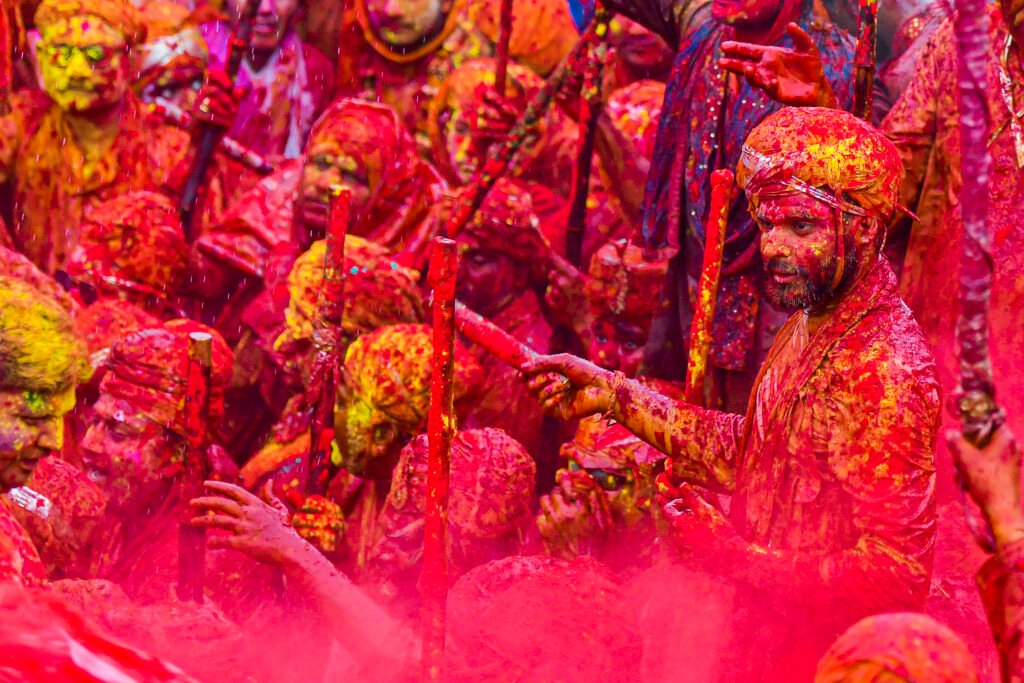
Through McCurry’s Lens: My First Glimpse of Holi
Decades ago, I was immersed in a Steve McCurry photo book when I came across a very unusual image: a group of men in turbans carrying another man above their heads. The photo had been taken from a higher vantage point. So far, nothing new — I had already seen similar scenes at countless rock concerts.
But this photo, in particular, was different: all the men were covered in shades of red and orange, except for the one being carried, who was painted green.
My immediate thought was: what on earth is happening here?
The title of the photo was Holi Man, and it had been taken during the Holi Festival in India. At that time, I had absolutely no idea what the festival was about. Later, I came across other photos just as striking: a boy covered in red paint standing against a green wall, and three men in turbans chatting, their entire bodies also drenched in color.
Little did I know that years later, I’d be right there in the middle of that same explosion of colors.
The Search for Holi Begins.
Holi is a vibrant Hindu festival that celebrates the triumph of good over evil and the divine love between Lord Krishna and Radha. It also marks the arrival of spring and the end of winter, making it a significant harvest festival.
According to Hindu mythology, Lord Krishna, who had a dark complexion, often worried whether Radha, who was fair-skinned, would accept him. When he expressed his concerns to his mother, Yashoda playfully suggested that he colour Radha’s face with gulal to erase their differences. Krishna followed her advice, and this playful act became the inspiration behind Holi’s colourful celebrations.
Fast forward to 2019, and I couldn’t get the idea of photographing Holi out of my mind. So I went to Google and started searching for photo workshops during the festival.
The first one I found was from a Brazilian company. I checked the itinerary and, to my disappointment, it wasn’t focused only on Holi but included other places in India I had already visited. Still, I didn’t give up and got in touch with them only to discover that although the workshop carried Holi in its name, they would actually spend only a couple of hours at the festival.
When I asked why, the organizer explained that the previous year they hadn’t had the best experience. He said that some of the women, in particular, had complained about the chaos and ended up asking to leave early.
Astonished, I thought: well, then this workshop doesn’t even deserve to be called Holi.
He asked if I was interested. My answer was short: No! I told him I had already been to Carnival in Bahia five times — and that I could handle it.
His last words were almost a warning: “You have no idea. You’re not going to make it, and you’ll end up hating it!”
Well… I guess I just had to find out for myself.
Back on Google, I found a German photographer offering a five-day workshop during the festival. Perfect!
In a split second, I reached out — and just a few days later, my spot was secured.
No turning back now.
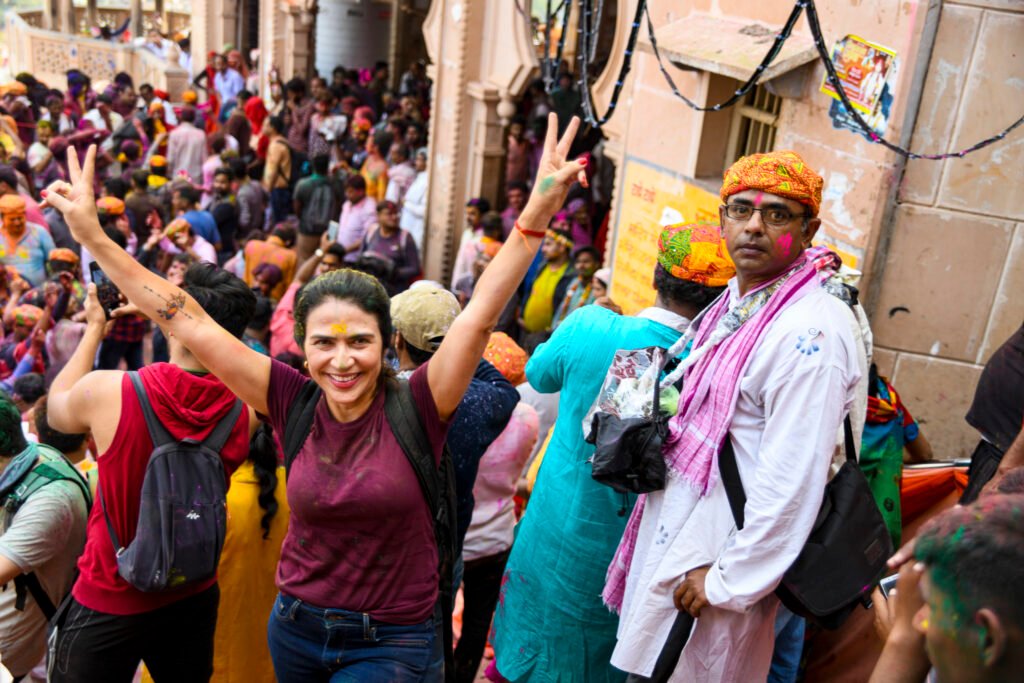
Lost in the Lanes of Barsana
After my short yet intense visit to Varanasi, and still processing everything I had just seen, I arrived back in Delhi.
Runa, the photo tour organizer, picked me up, and we began our three-hour journey by car to Vrindavan.
Did you know?
Mathura and Vrindavan are cities closely linked to the story of Krishna, while Barsana and Nandgaon are neighboring villages associated with the youth of Krishna and Radha. Together, these places form the spiritual heart of Holi in India.
Our group was small but eclectic: the Brazilian (that’s me), two Germans, a Malaysian, Runa — another German — and an Indian assistant she had hired to help.
The plan for the first day was already ambitious: to photograph the Laddu Holi at Shri Ji Temple, the most important temple dedicated to Raddha. I can’t speak for the group, but I was feeling pretty anxious.
We left our hotel in Vrindavan and headed to Barsana. Near the temple, we switched vehicles and jumped into a tuk-tuk. No windows protecting us anymore. It felt like: let the game begin.
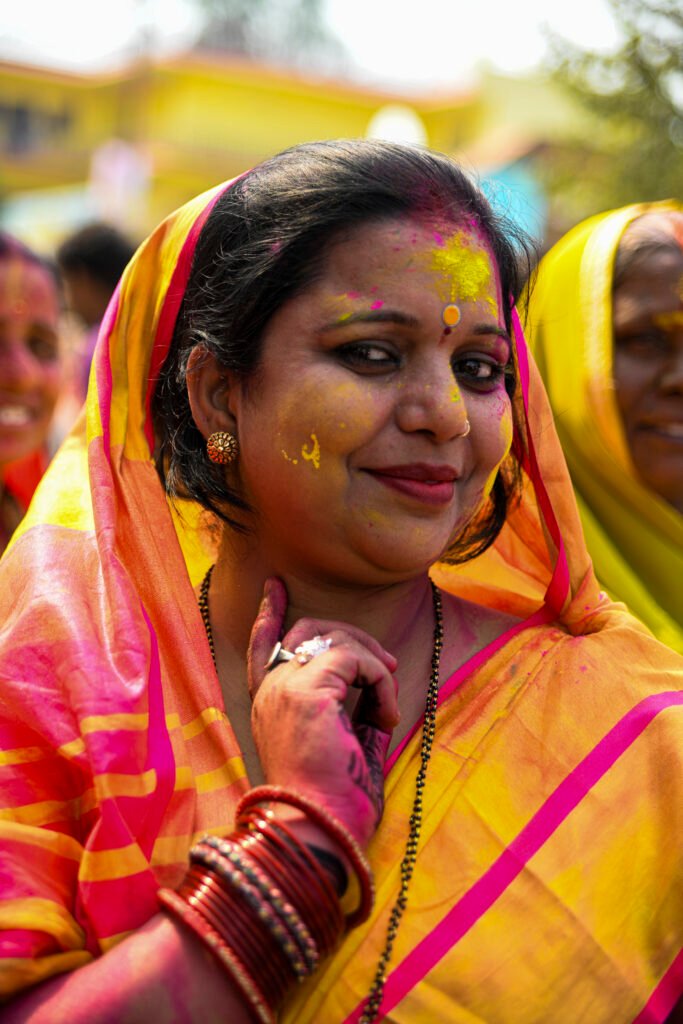
By then, it was already possible to see people covered in colors on the streets and to feel the energy and noise rising to new levels. That’s when I discovered that, besides powder (Gulal), they also threw colored water — using what looked like toy machine guns.
But this first contact still looked very different from the pictures I had seen with massive crowds of people drenched in color. At that moment, I was surrounded mostly by families, children, and women, and the atmosphere felt more like an afternoon matinee.
The powders weren’t flying yet. Instead, people would approach us with a smile, gently passing different colors on our faces until we began to look like tribe members.
As we left the wider road for narrower ones, the “school party” atmosphere faded. The closer we got to the temple, the harder it became to move. People covered in colors came from every direction. Groups of friends laughing and playing.
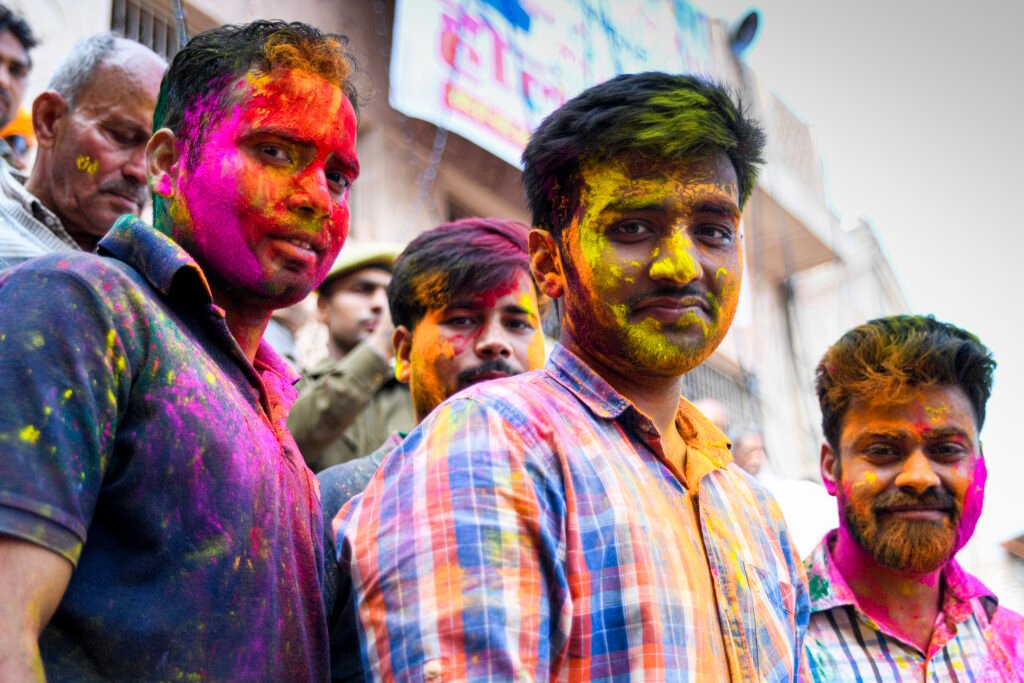
The doors and windows of the houses were all open, with people enjoying the festive procession right in front of them. With all that movement and noise, I doubt they could have done anything else, even if they wanted to.
Every now and then, we stopped and leaned against a wall, just like those standing at their doors watching the crowd pass by — only this time, it was our turn to watch.
After a while, and a little more covered in color, my eyes caught sight of a crowd that looked as if they were climbing a hill. In a split second, I realized the temple on top — and the stairs leading up to the main entrance, already packed with people waiting for it to open.
Too Much for One Pair of Eyes
Then Runa said we should start moving slowly, getting as close to the entrance as possible to guarantee our place inside.
Maybe because of its religious roots, I could sense that the crowd was both happy and anxious to get in. Still, I never felt in danger, and after a while, we were already interacting with the people around us.
The most awaited moment finally arrived, and someone shouted, “Remove your shoes!”
What?! I bought waterproof shoes just for this!
A few minutes later, we were inside — barefoot. I started to wander. At some point, I realized I was alone, and so was everyone else, each lost in their own experience.
But I didn’t even have time to get lost.
In seconds, the air turned completely red. I saw a group of men sat on the floor in the middle of the temple while others played traditional instruments and threw even more red powder into the air.
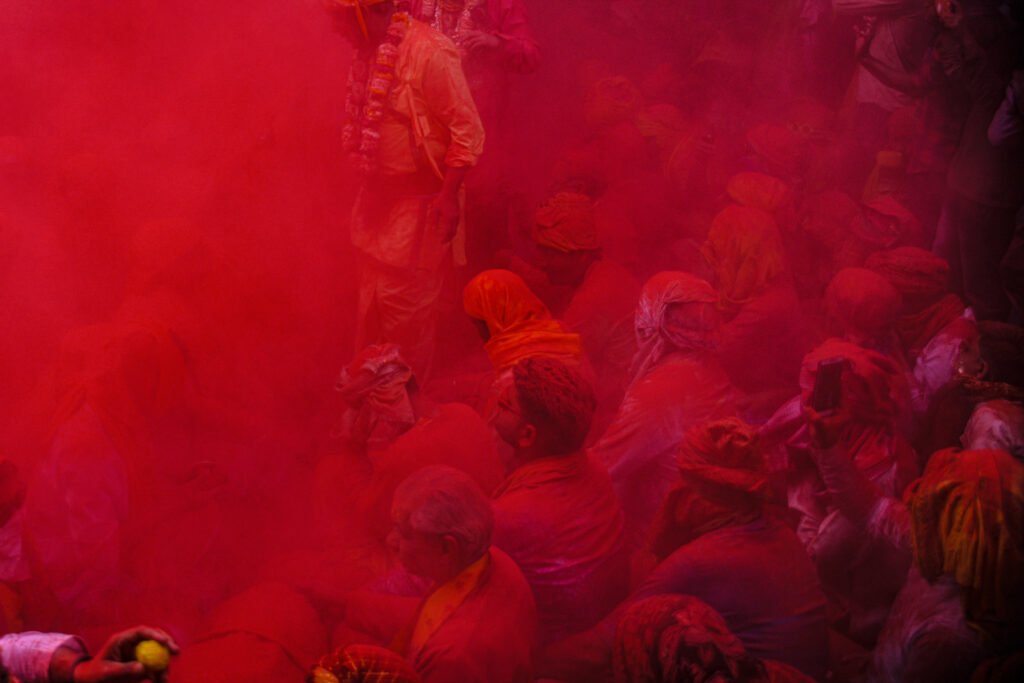
The atmosphere had changed entirely since we stepped inside. Here, faith and celebration blended — devotion dancing with joy.
The ritual has a spiritual meaning. The red powder (gulal) symbolizes love and divine energy, directly linked to the goddess Radha. The men seated receive the colors as a blessing — a gesture of devotion rather than play. Those who throw the powder do so as part of a sacred rite, accompanied by mantras, music, and traditional instruments like drums and cymbals. It’s a ceremony within the Holi tradition, but one that is ritualistic and spiritual, not merely festive.
I was overwhelmed by everything happening at once. My camera was covered in color; even though it was protected, it was just one more thing crossing my mind amid the chaos. Then I noticed something unexpected: a floral, gentle scent coming from the powder.
Suddenly, trying to photograph one thing at a time felt pointless. I wished I had more cameras, more eyes, more ways to capture it all.
I lost track of time, and suddenly I looked around and realized I couldn’t see anyone from my group.
Fuck!
Whoops — it’s a temple, Catia… sorry!
But where are they?!
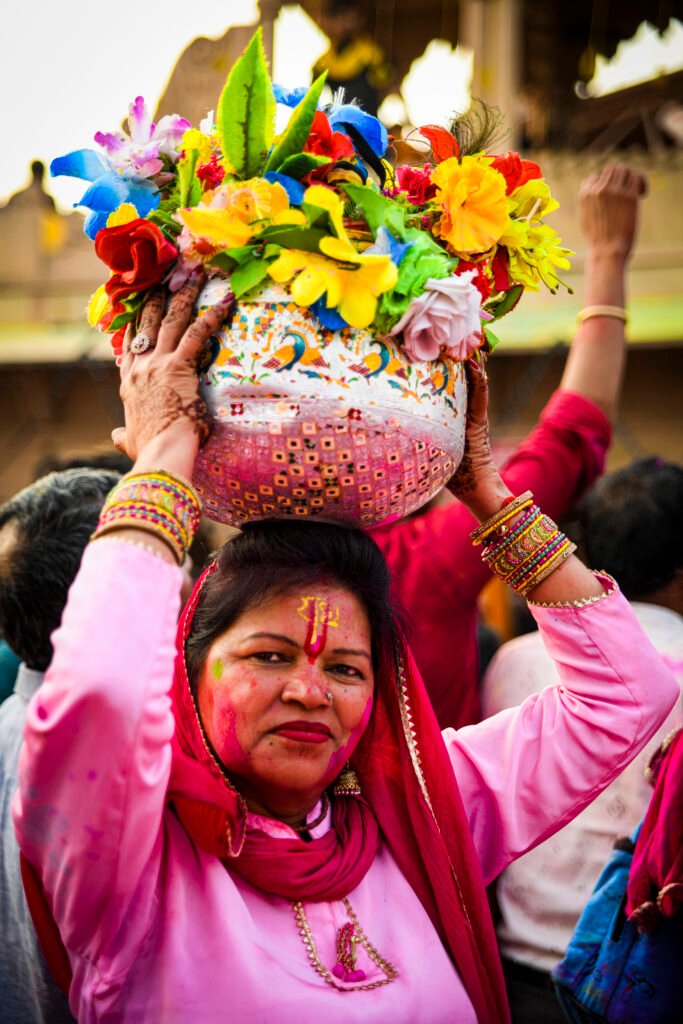
Leaving the ritual behind, I started searching for a familiar face. Then I saw them — all gathered on an open terrace, where, as if by magic, the atmosphere had turned festive again.
We stayed there until dusk, when we all made a giant effort to drag our exhausted asses and dazed minds back to the hotel.
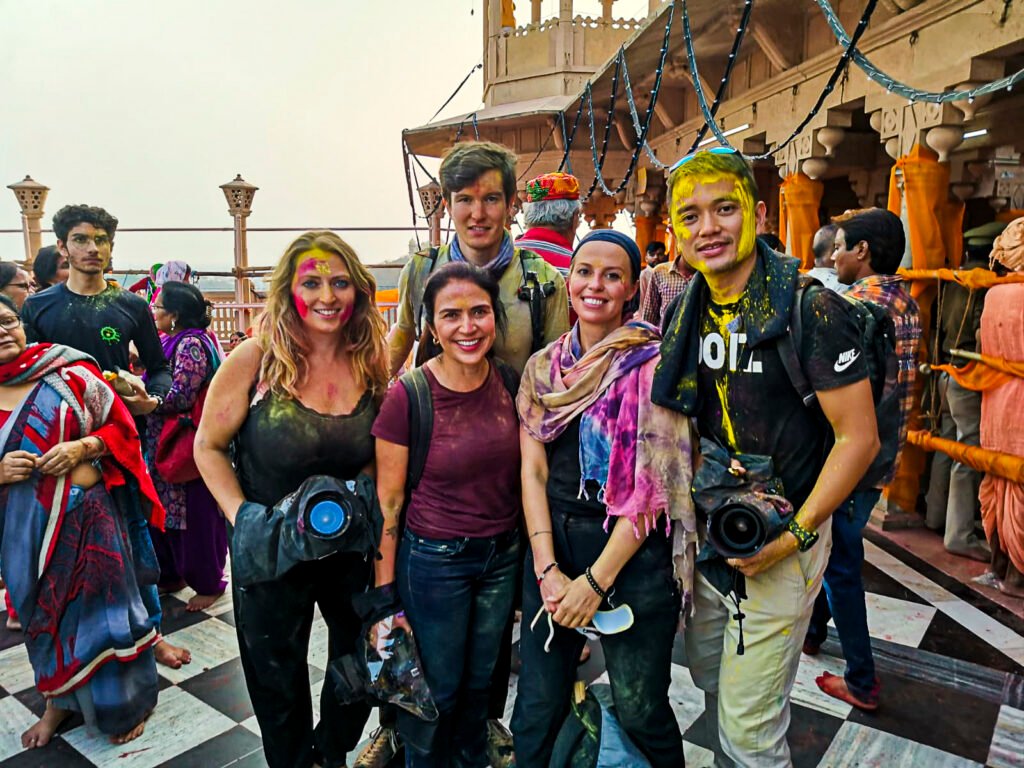
Chaos, Color, and Sticks
Thinking I wouldn’t see anything very different from the previous day, we headed back to Barsana the following morning — this time for Lathmar Holi.
Did you know?
During Lathmar Holi women playfully “beat” men with sticks (lathis) as part of tradition. According to the most popular legend, Krishna, who lived in Nandgaon, once visited Barsana to play with Radha and her friends, playfully throwing colors at them.The women of Barsana, either offended or simply joining the game, responded by defending themselves with sticks, chasing Krishna and his friends back to Nandgaon.
The atmosphere in Barsana felt different from the first day. The streets were even more crowded, the air was thicker with powder, and colored water was being thrown from every direction.
At one point, it felt like someone was using a water hose on us. Even with the protection, my camera got wet, and soon I was completely covered in yellow — and it was only the first hour of the festival!
They were aiming straight for our faces, too — throwing handfuls of powder with precision. I went blind so many times I lost count.
This part of the celebration takes place in the streets, so we kept walking through the colorful crowd for a while.
Photography became a real challenge: besides the powder on my face, my camera was constantly getting covered in it. I had to wipe the lens cover before every single shot, with nothing even remotely clean to use.
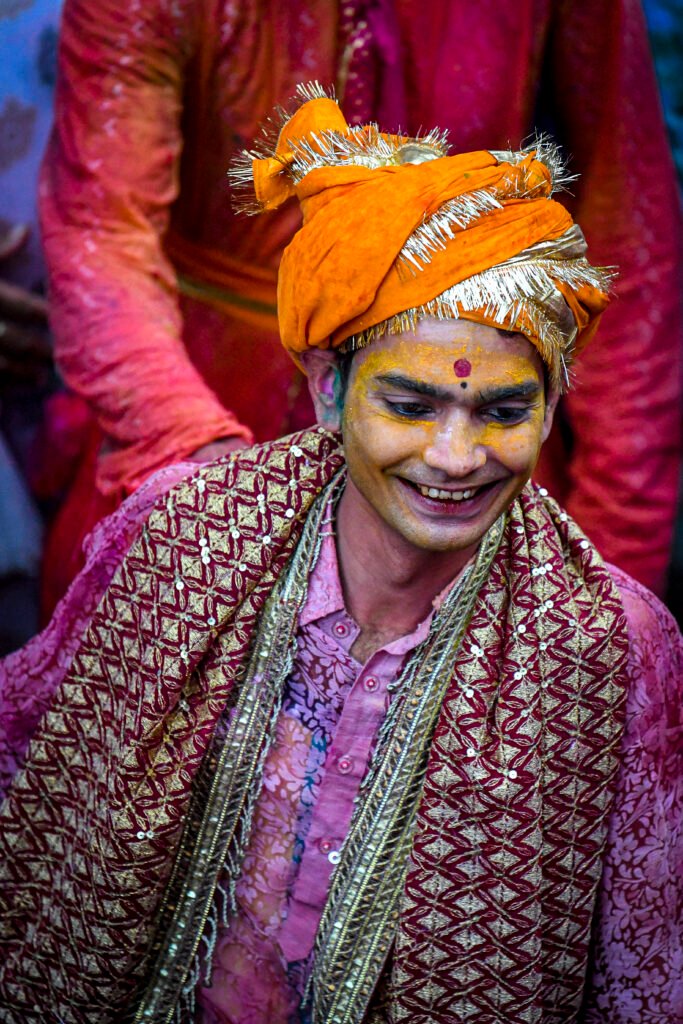
And then we saw it — the scene was intense.
Women wearing stunning saris carried giant sticks, while men, dressed in traditional outfits, sat on the floor as the women struck the shields they held above their heads — without mercy or hesitation.
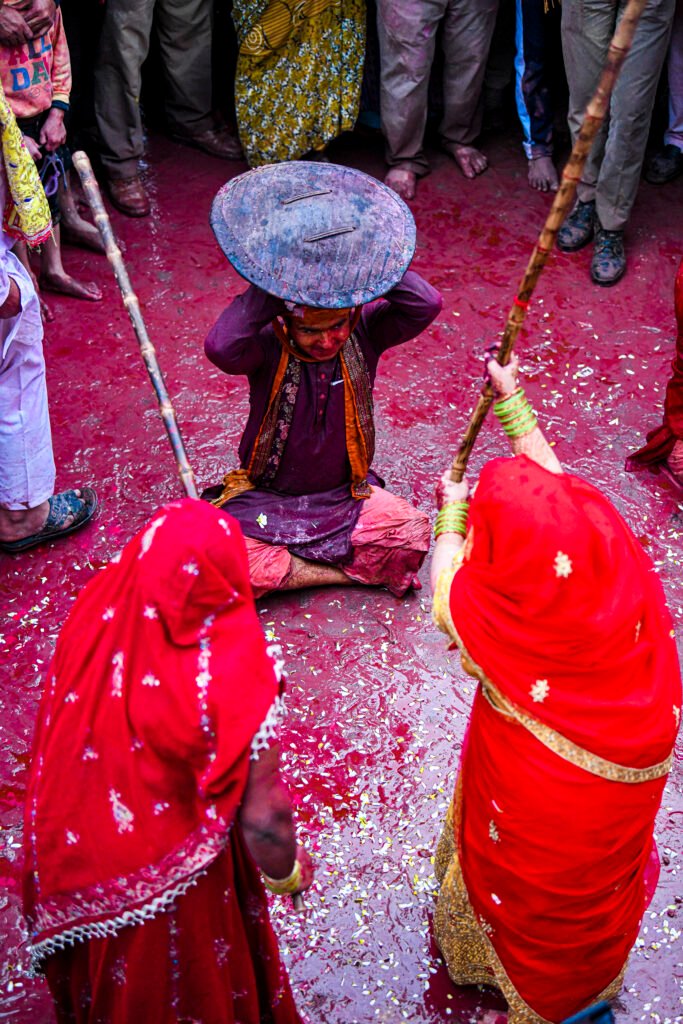
The crowd was having the time of their lives: smiling, shouting, dancing — and right in the middle, a scene that, in any other context, would probably end at the police station.
This world truly never runs out of surprises.
Then Runa came over and said she had managed to get us into a house with a terrace. Perfect! By then, the air in the street was so dense it was hard to breathe.
From above, the view was even better. We stayed there, pressing our shutters nonstop.
And then, as if things weren’t crazy enough — it started to rain.
You can imagine what happened next: it turned into a huge, glorious mess! The colors disappeared, and everything (and everyone) turned pink.
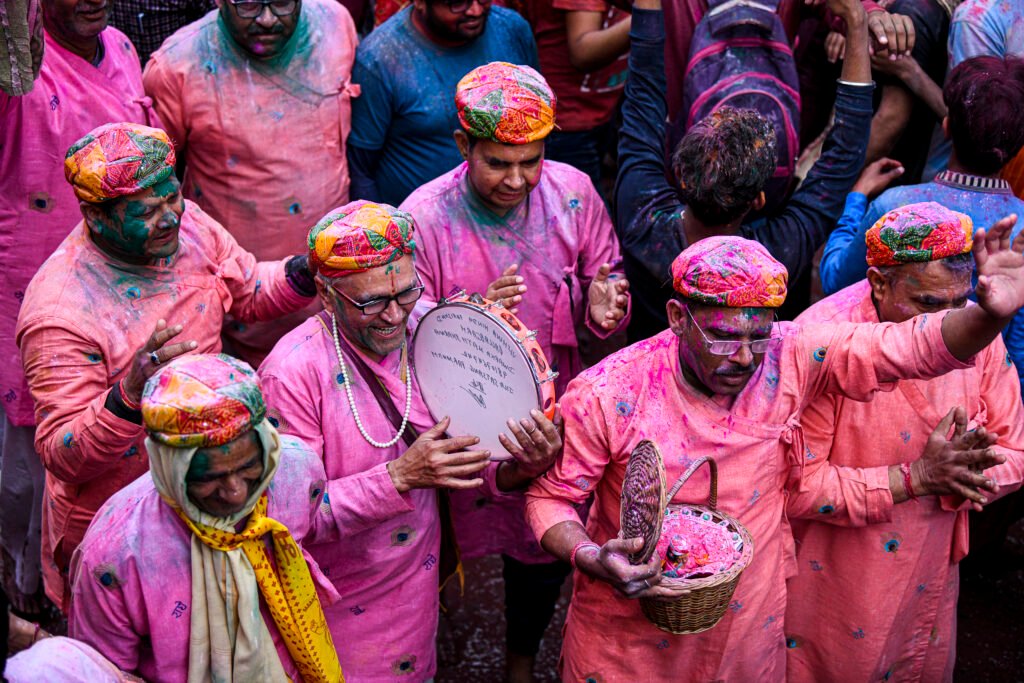
After leaving a still-insane Barsana behind, we looked for a tuk-tuk — and found only one.
It was time to discover how they managed to fit what sometimes looked like 20 people into one. After all, there were only six of us.
I guess I did end up seeing quite a few things different from the first day.
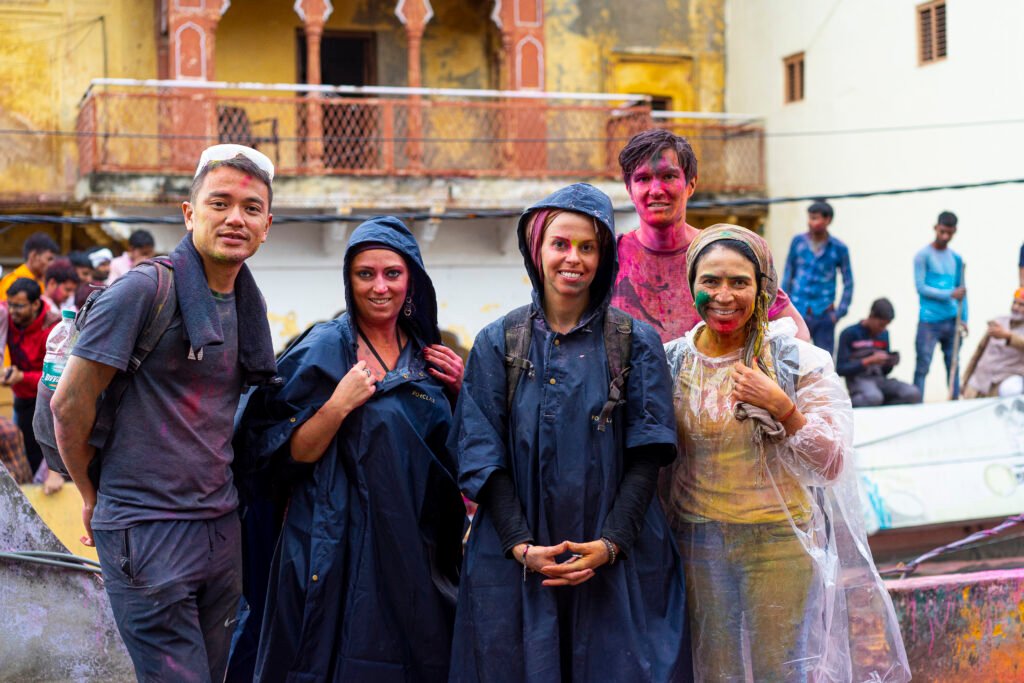
When the Silver Door Opened
That night, there was a ceremony at the main temple in Vrindavan. Runa had become friends with the temple’s priest during the time she lived in India.
The rain was still pouring, but it didn’t stop people from attending the ceremony. The temple was absolutely packed.
When the priest saw Runa, he asked someone to guide us to a small, segregated area right in front of the altar. From there, I could see a few religious men seated, dressed in traditional attire, and a huge silver door standing closed behind them.
When that door opened, the whole temple erupted — it felt like watching a crowd celebrating their team’s victory.
The atmosphere was filled with faith, devotion, and hope. I glanced at Runa’s assistant, Siddarth, beside me, and he had tears in his eyes.
It was truly a breathtaking experience.
A Holy Meal (and a Starving Photographer)
As another unexpected — and very welcome — moment, after the ceremony we were invited to have dinner at the priest’s house. I couldn’t believe it!
The next thing I knew, we were stepping into a huge yet simple living room.
They rolled out a long rug on the floor, and we all sat cross-legged. Someone began placing plates in front of each of us.
The priest’s wife approached us with a smile and, in excellent English, asked if we were enjoying our experience so far. Then she gently warned us that the food we were about to receive had come from the temple and had been blessed — so it shouldn’t be wasted.
I could almost read everyone’s minds: after walking all day through that madness and having only a light sandwich for lunch, wasting food would definitely not be a problem!
And it wasn’t. The food was divine — in every sense of the word.
As soon as we finished, Siddarth told us it was time to leave.
A little worried, I asked, “But isn’t it rude to leave right after dinner?”
He assured me it was perfectly fine.
I found it a bit strange, but my back was screaming after all that cross-legged sitting, and my tired body was more than happy to finally lie down.
I ended the day exhausted, blessedly fed, and still yellow.
Nothing to complain about.
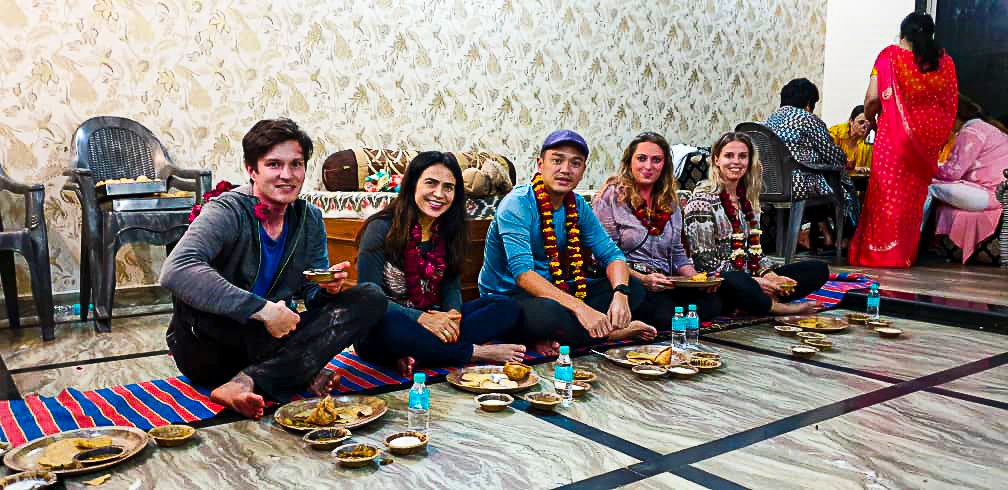
A Living Work of Art
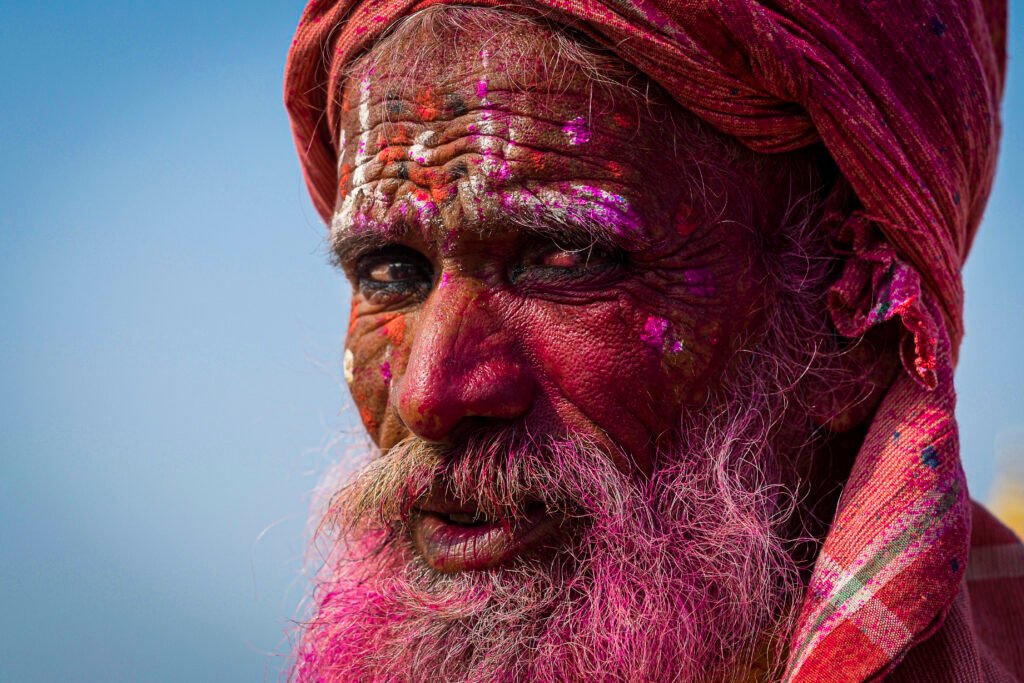
Our next Holi ceremony was in Nandgaon.
If you Google Holi photos, you’ll notice that a huge number of them were taken at Shri Nand Baba Temple, with its vast courtyard packed with people.
The temple’s ancient architecture offers two ways to join the ceremony: you can stay downstairs, walking through the crowd, or go up to the mezzanine for a panoramic view.
I was trying for a mix of both — well… until a certain point.
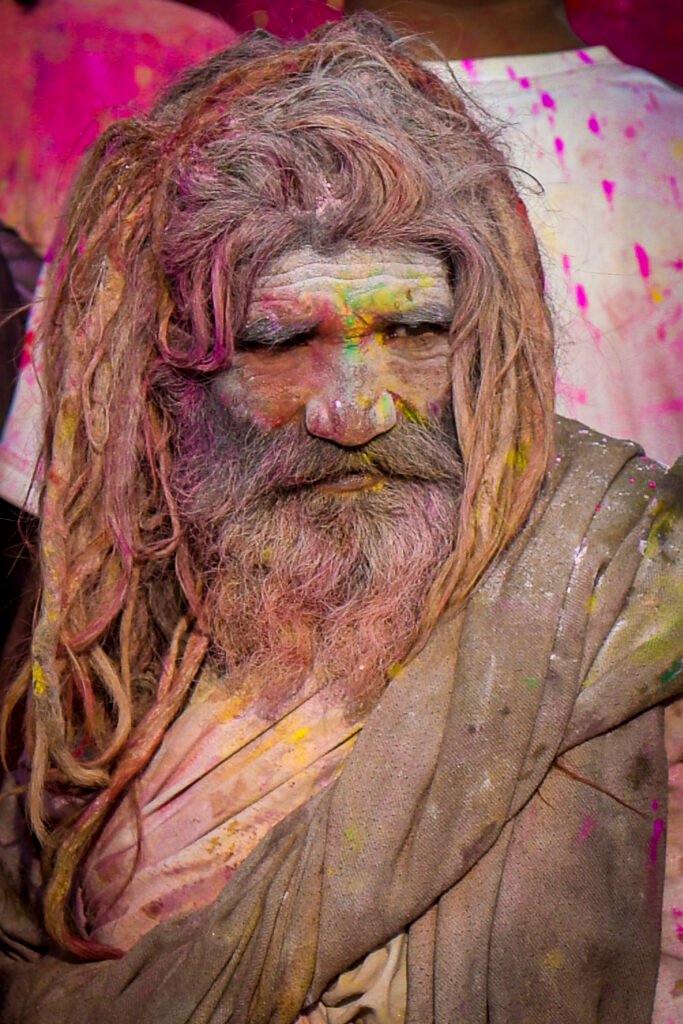
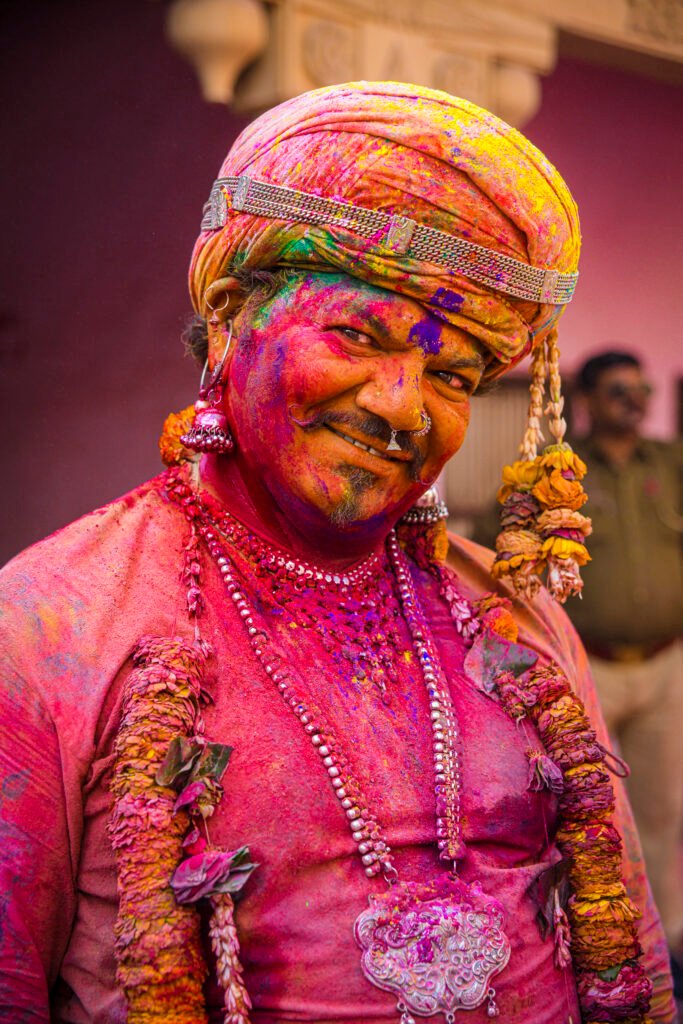
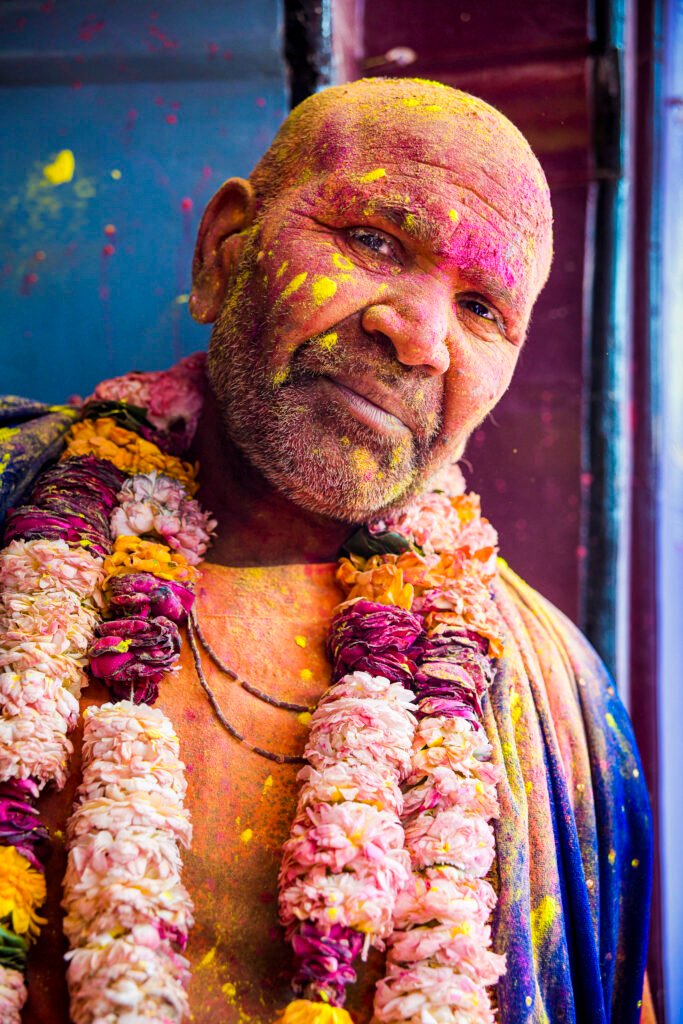
After a while, walking in the lower area became harder — not just because of the powder constantly hitting my face or the inevitable “baths” from buckets full of colored water, but mainly because there simply wasn’t enough space for everyone anymore.
I’m 1.5 meters tall, carrying a backpack stuffed with my lenses, shoes, and water. At times, I felt completely swallowed by the crowd, stuck and unable to move an inch in any direction.
I ran into one of my friends in the middle of that chaos, and he just said, “War is on!”
So, I climbed to the upper level and stayed there.
Even today — five years later — I can still picture that scene vividly.
The crowd throwing clouds of pink, then yellow, blue, and finally red powder created such a powerful sight — it was like watching a living work of art.
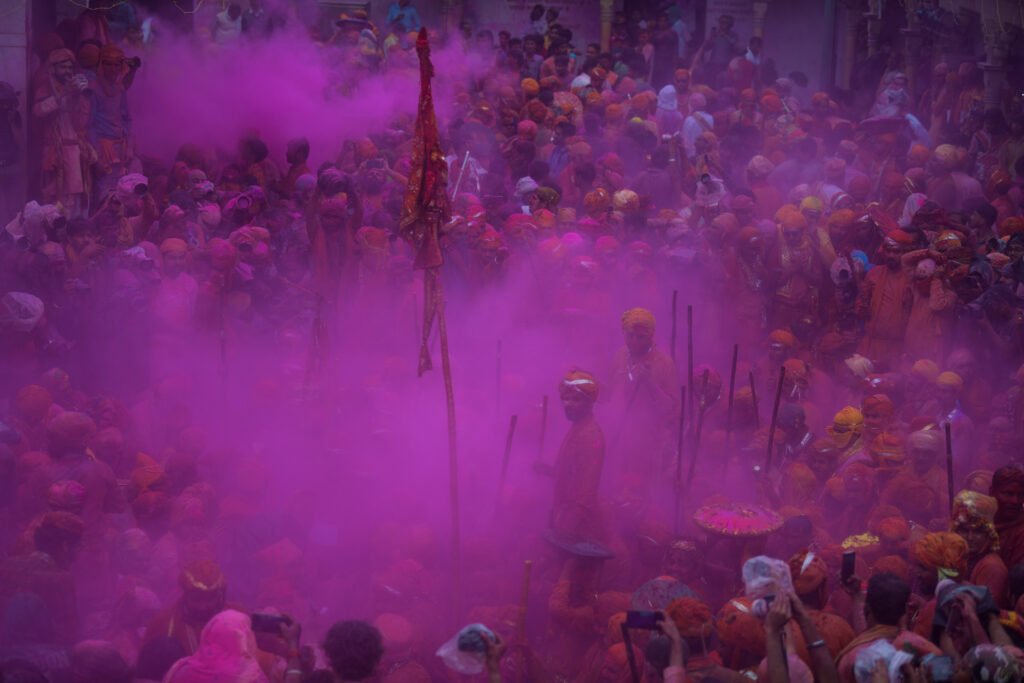
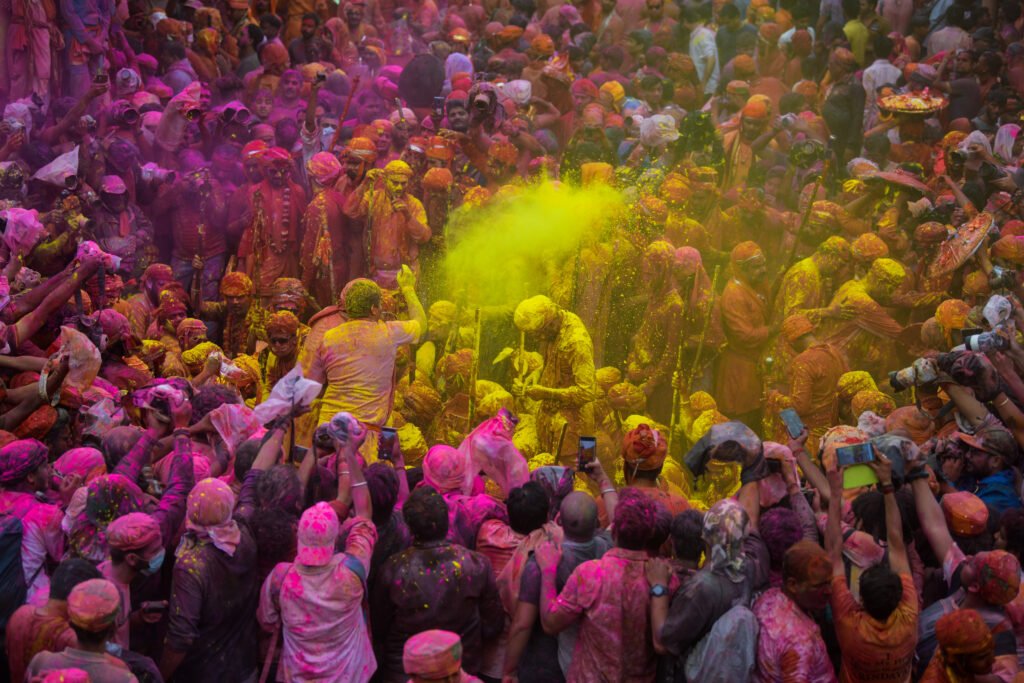
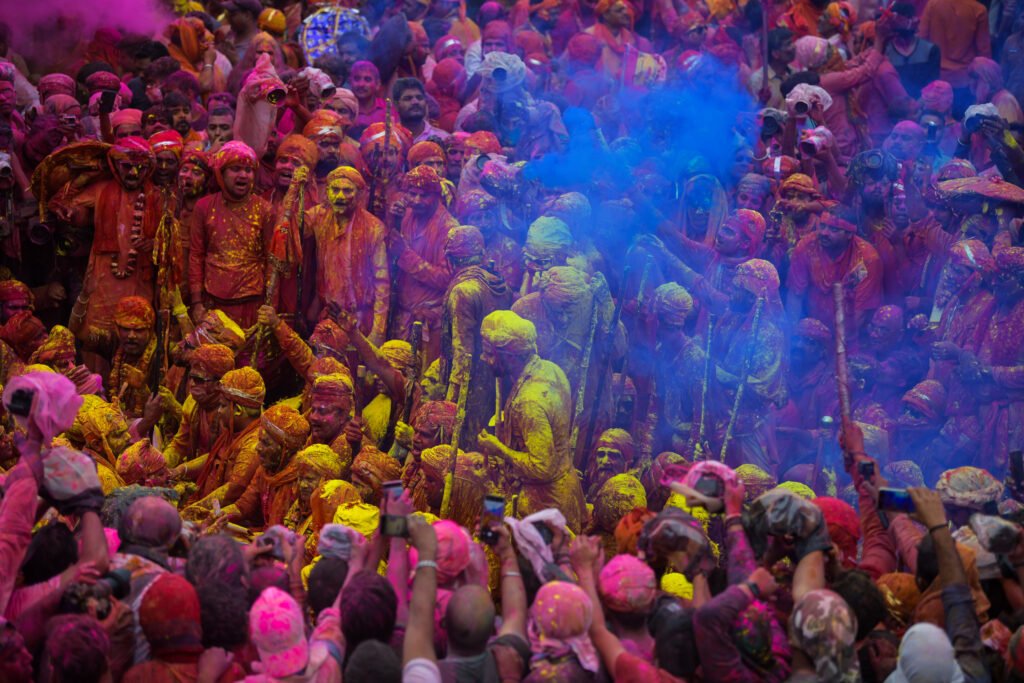
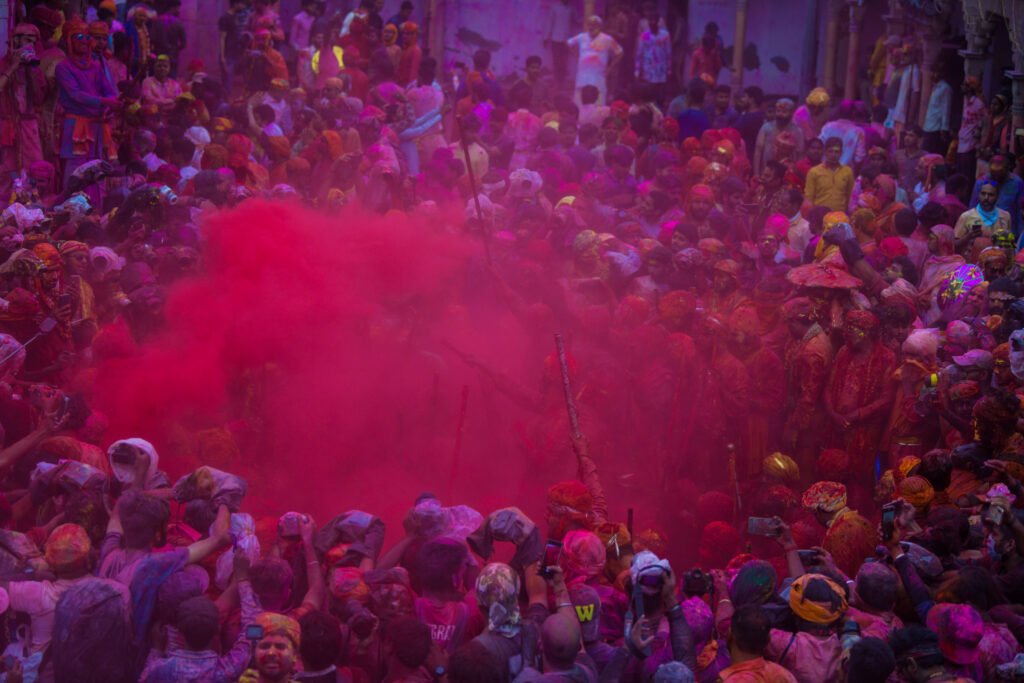
On our way back to the car, still taking photos in the streets, we stopped in front of a family house. Everyone was outside enjoying the festivities, and they seemed curious about our group. Siddarth explained what we were doing, and they invited us in.
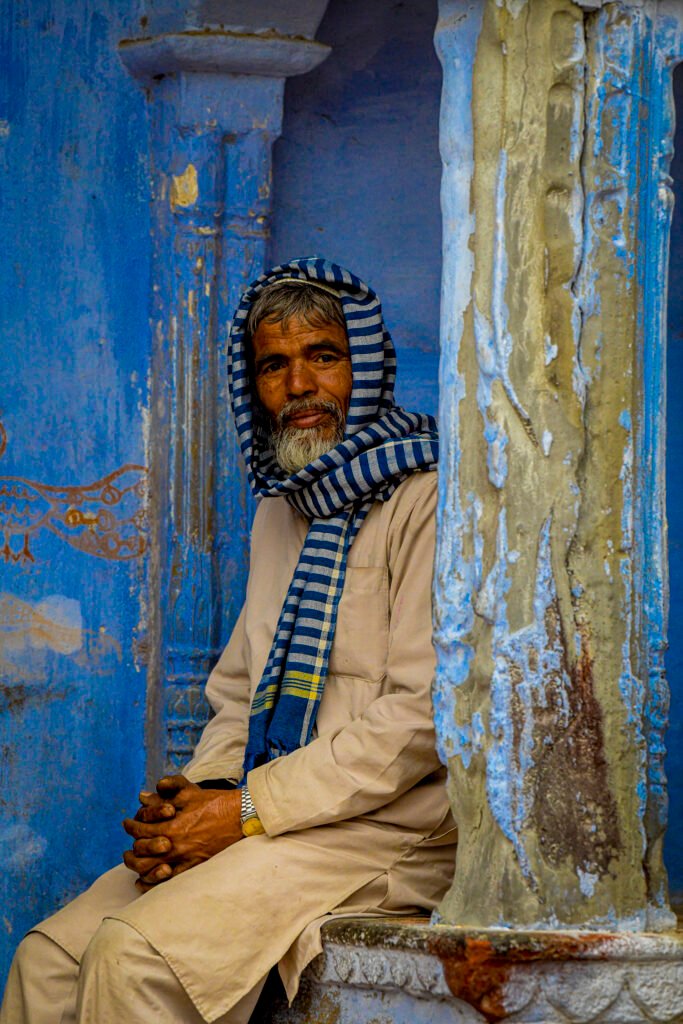
We took photos together, and as we were leaving, the elderly man spoke to Siddarth, making circular gestures with his hands — and suddenly I heard the word roti.
I asked if they were inviting us to eat chapati (a type of Indian bread I absolutely love), and Siddarth said the man was inviting us to come back another day to eat roti.
Amazing how I can understand an invitation to eat — even in Hindi.
At least we were going to have chapati at the priest’s house. Yes — we’d been invited for dinner again!
It was so nice, delicious, and peaceful — a much-needed contrast to the rest of the day.
We ate like there was no tomorrow. No food would ever be wasted with us around.
When the Colors Faded
Before going any further, I should mention that all these contact-filled festivities were taking place in the first week of March 2020.
Just a few days later, I was back in Brazil — and by March 16, already working from home
At that time, Covid was still something distant, just a headline on the news
The only reminder came from time to time, when locals shouted in their distinctive accent as we walked through the crowd:
“Covid, covid, covid!”
We just laughed.
I remember that moment now because the next place we were supposed to visit was the Widow Holi at Pagal Baba — a celebration where widows break centuries-old traditions forbidding them from participating in festivals or wearing bright colors by playing Holi with colored powders and flower petals.
It’s a powerful event, full of symbolism and joy — but that year, it was cancelled due to Covid, since most of the women were elderly.
I didn’t know it then, but that was my first restriction caused by the pandemic.
The Madness Beneath Beauty
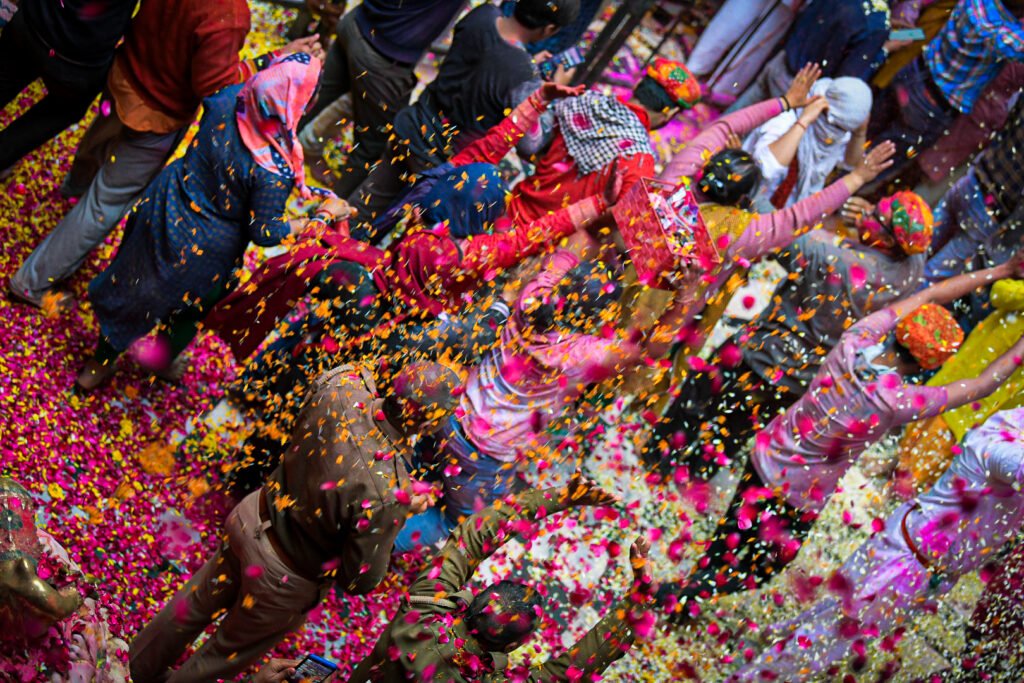
Since Holi festivities never really run out in that region, we simply had to choose another one — the Holi at Bankey Bihari Temple in Vrindavan, where the priest happened to be Runa’s friend.
Vrindavan is believed to be the city where Lord Krishna spent his childhood and youth, and its main temple becomes a place of intense devotion during Holi. We were warned that it would be completely packed — and that once the doors opened, it would be every man for himself.
As we were offered the chance to take photos from the balconies, that’s where we all went.
In addition to the now-familiar gulal, masses of flower petals were sprinkled from the balconies onto the crowds below. It created a whole new kind of scene for the photos — and it was truly breathtaking to see all those colors and petals filling the air with magic.
Of course, looking closer beneath all that beauty, there was chaos. People were getting crushed. They really couldn’t care less about that tiny detail of physics — that two bodies can’t occupy the same space at the same time. I saw women carrying children, elderly people struggling — everyone trying to make their offerings and receive blessings.
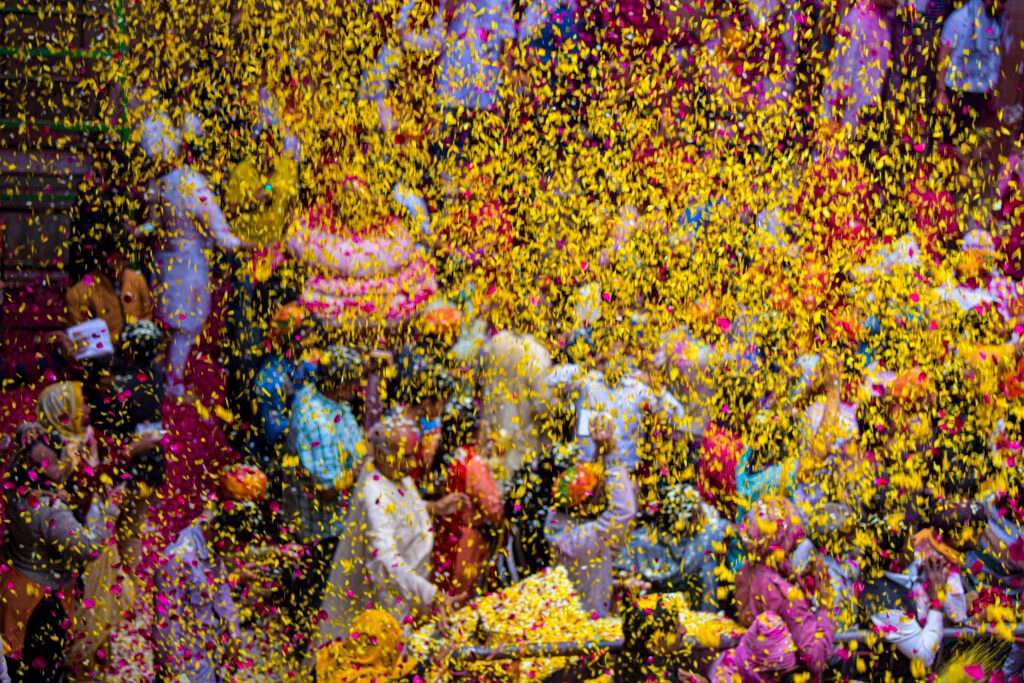
From time to time, a guard would appear on the balcony, telling us we couldn’t stay there. We’d explain that the priest had given us permission, and he’d leave — until another one came along, didn’t buy our excuse, and kicked us out.
A few minutes later, we’d sneak back — and the cycle would begin once more.
After a while, I got tired and a little bit annoyed with this can and cannot stay here routine — and, I guess, with all the accumulated exhaustion, I was ready to call it a day.
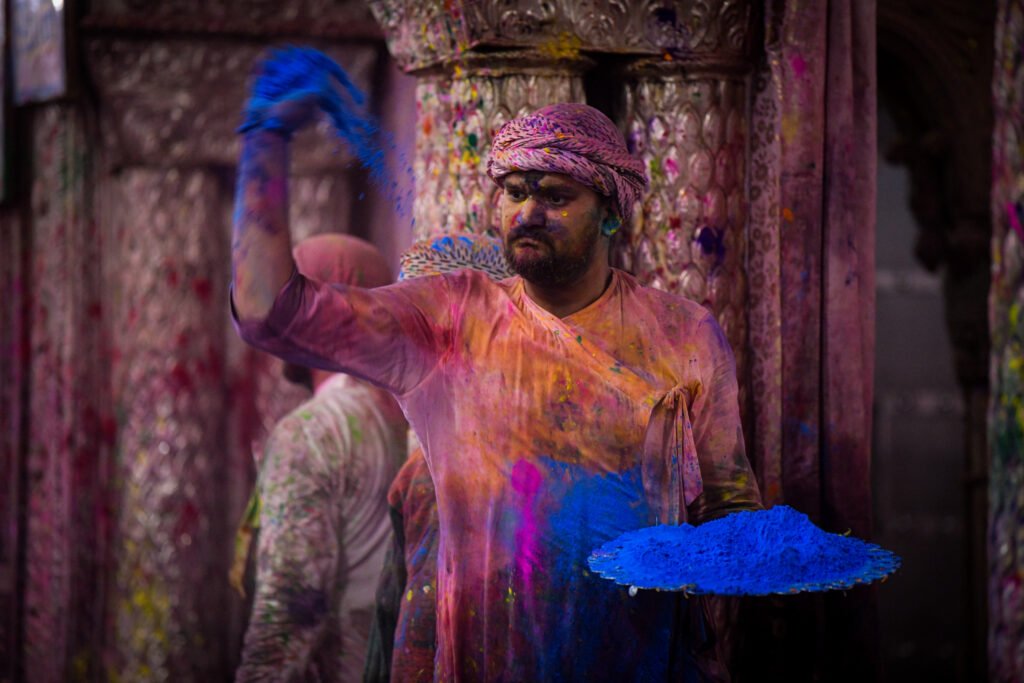
The Day I Learned About Digital Faith
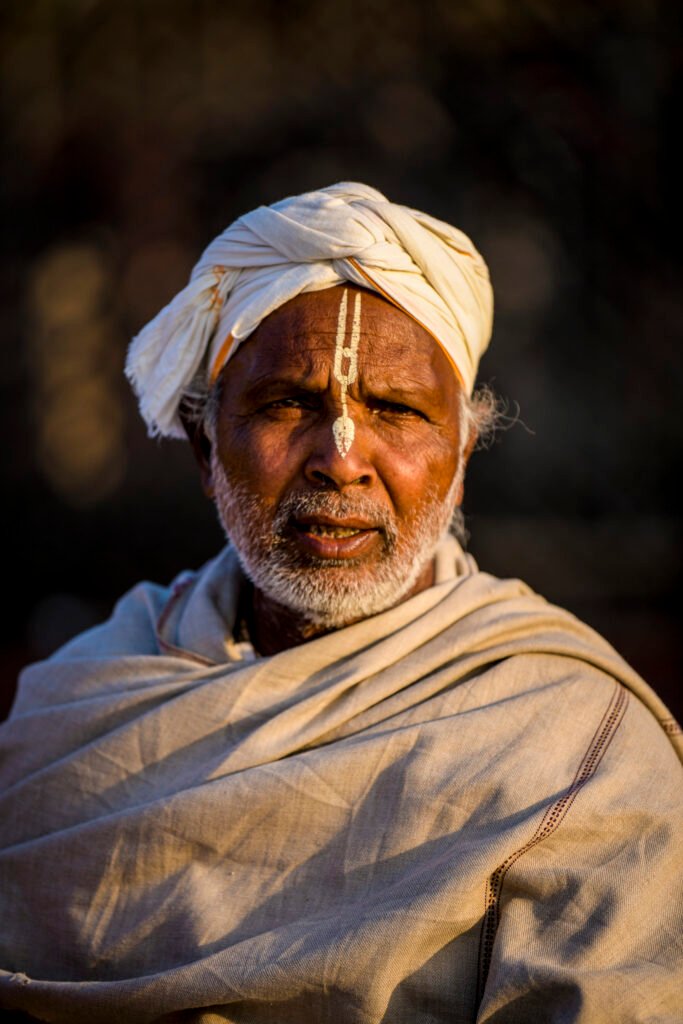
I could hardly believe it was already my last day. My friends would continue for four more days of the festival and then head to Varanasi. I didn’t have enough vacation time left for that — so my photo tour would be shorter.
For the last day, we had a much-needed free morning to recharge our batteries. In the evening, we would visit Keshi Ghat for the Yamuna Aarti — a fire ceremony held in honor of the sacred river.
Keshi Ghat is known as one of the most beautiful ghats along the Yamuna, adorned with massive red sandstone palaces. It looked similar to what I had seen in Varanasi, only on a smaller scale.
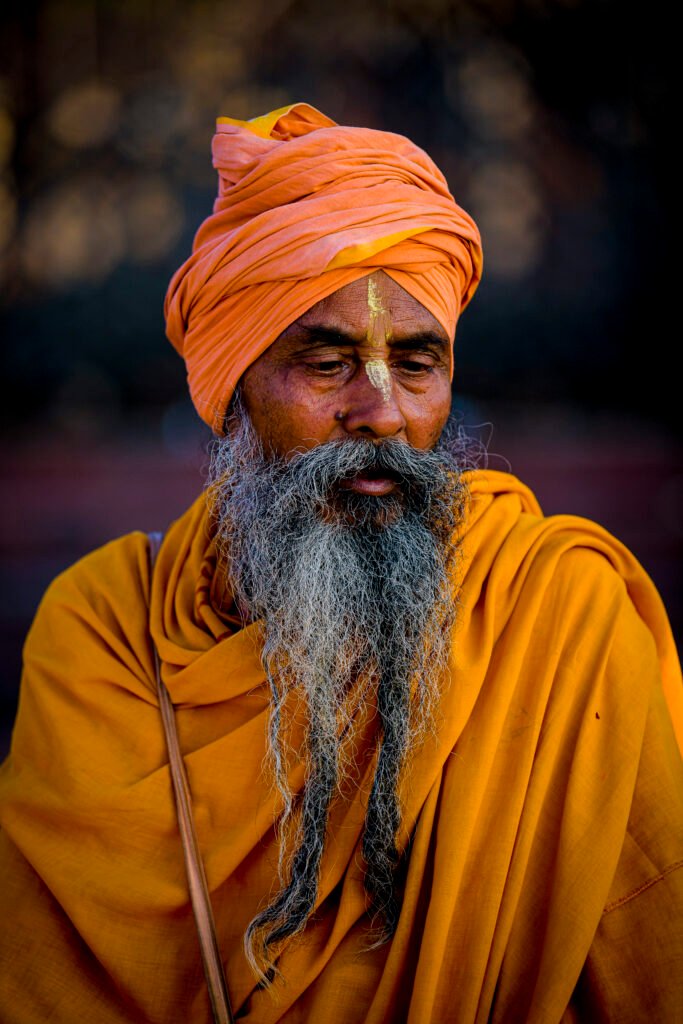
(Short parenthesis) — The day before, during the ceremony, we were standing near the altar. I was already tired and had stepped a little back when Siddarth approached, complimenting my camera. I handed it to him so he could take a look. He asked if he could shoot a few pictures, and I said, Go ahead!
He stayed there for a while taking photos and then handed it back to me.
The next morning, he asked if he could have the pictures, and I said I would send them all later. He insisted on coming by to make a copy, and since I had a free morning, I didn’t refuse.
He came with some kind of gadget that he plugged into my camera and after a while left saying he had copied the photos.
A few hours later, I was already in the boat on the Yamuna when I turned on my camera — and the only thing that appeared on the screen was an exclamation mark followed by:
“Folder contains no images.”
What?!
For a moment, I froze. Then I removed the SD card and reinserted it. Same message.
After several failed attempts, it hit me — everything on that card was gone.
The entire previous day — the ceremony in Vrindavan, the street scenes and the riverbank shots we took after the ceremony — everything.
I called Runa, completely freaking out, but there was nothing she could do either.
At that moment, I couldn’t care less about the sacred ceremony. All I could do was yell at Siddarth — big time.
In English, Portuguese, Hindi… suddenly I was fluent in every language, and I was certain he understood every single word.
In his hurry to get his pictures, he had deleted mine. All of them.
I made a huge effort to stay calm for the rest of the ceremony, but it was a lost cause.
It was exactly because of situations like this that I had learned: never keep all your photos on one card, even if there’s still space. If something goes wrong, at least not all your photos are gone.
As soon as we arrived back at the hotel, Runa asked if I could leave the SD card with her.
Later that night, when I arrived at the restaurant, Runa and Urip — who, from that day on, was officially sainted in my book — were already there.
They gave me the most wonderful news: somehow, Urip had managed to recover my deleted photos. Apparently, he’d used some software and brought them all back from the digital afterlife.
Actually, he was still in the middle of the process, but it was working. It wouldn’t be finished before I left, but Runa promised to send me everything once it was done.
For a few seconds, I just stared at them in disbelief. Then came relief. Pure, overwhelming relief.
Saint Urip — I’ll never forget you.
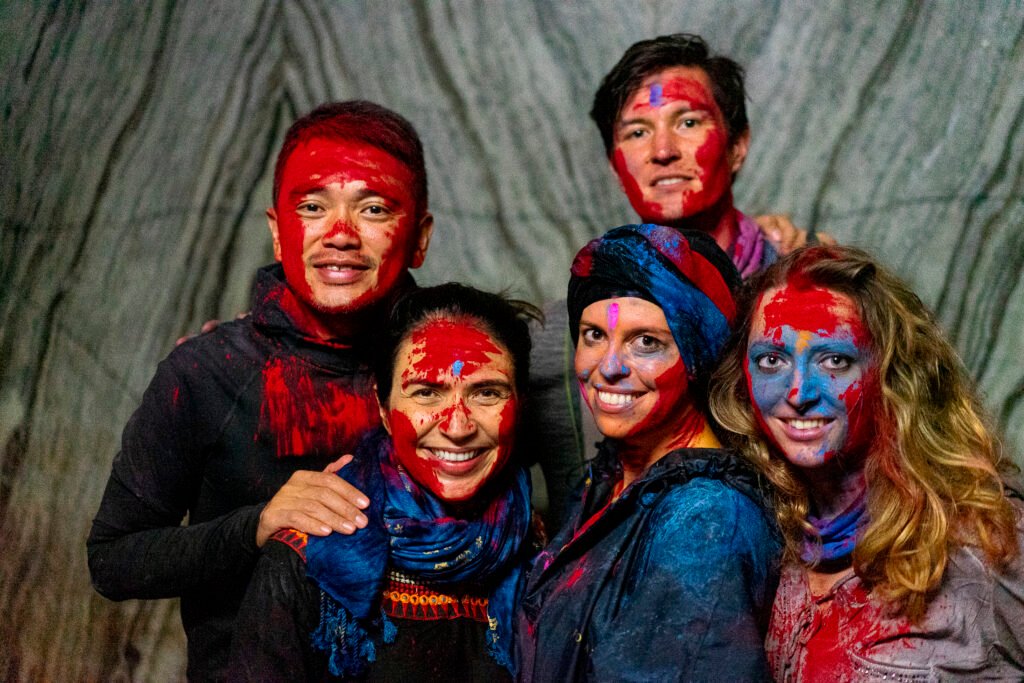
😮💨 What a scare that must have been — losing all your photos! I can’t imagine the chaos, and what a relief to know they were recovered in the end.
I’m not sure I would have taken this trip myself, but it was wonderful to travel through your eyes — your lens, and your words. Thank you for sharing it so vividly.
Thank you so much! It was such a rollercoaster — I still get nervous just thinking about it! I’m really happy you enjoyed seeing it through my lens. That means a lot! Not sure I’ll ever find another story as fascinating to write about as this one.